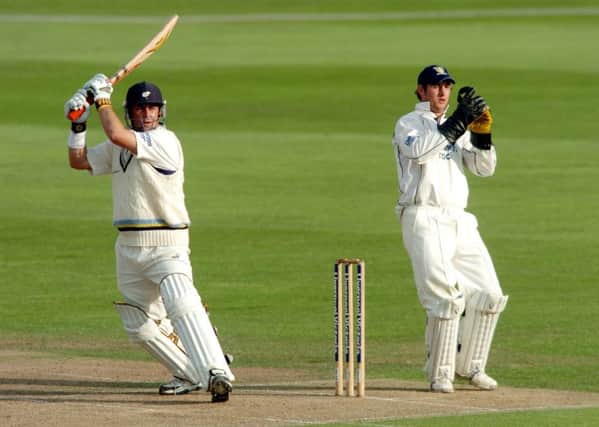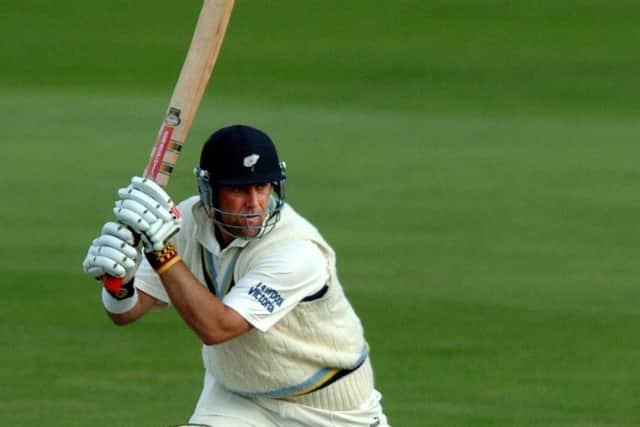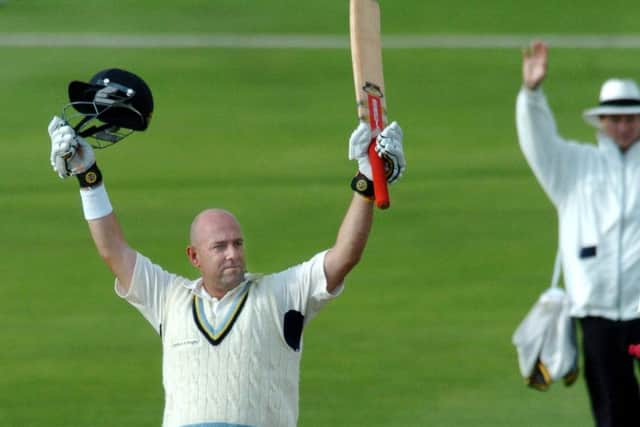Bygones: The day Darren Lehmann eclipsed Don Bradman but bowed out with George Hirst in sight


Ten years ago this week, the Australian signed off with 339 against Durham at Headingley – the highest score of his career, the highest score ever made at the Leeds ground, and the second-highest individual score in Yorkshire’s history.
Had Lehmann hit three more runs, he would have broken George Hirst’s county record.
Advertisement
Hide AdAdvertisement
Hide AdInstead, after falling agonisingly short of Hirst’s 341 against Leicestershire at Aylestone Road in 1905, he consoled himself with the classy comment that: “George Hirst was a much better player than I am”.


Those few little words, that one colossal innings, told you everything that you needed to know about DS Lehmann.
Not only was he a great player (and that superlative is used deliberately), he also wore his blessings lightly.
Lehmann was as modest off the field as he was murderous on it.
Advertisement
Hide AdAdvertisement
Hide AdThe only concession to arrogance was when he toyed with bowlers in the way that a matador toys with a bull; he was a past master at manipulating the ball into an area of the field from which a man had just been moved.


Never were Lehmann’s gifts more memorably displayed than during that valedictory innings at Leeds in September, 2006.
It was the final match of the season and a vital one, with the threat of relegation hanging over both Yorkshire and Durham.
In the end, both escaped in a drawn game – Yorkshire by one point and Durham by half a point – as Notts improbably claimed only one of the three points they needed against Sussex to survive.
Advertisement
Hide AdAdvertisement
Hide AdBut for Lehmann, Yorkshire would have been down for the second time in five seasons; it was not just the size of his innings that took the breath away, but that he produced it in such circumstances.


On September 20, the opening day of the match, Lehmann strode out to the crease at 11.20am after Yorkshire lost Joe Sayers and Craig White inside the first 50 minutes.
Sayers was caught in the slips and White unluckily run-out at the non-striker’s end after he had earlier won the toss.
Yorkshire rattled along in the opening session, scoring 156-2 from 32 overs.
Advertisement
Hide AdAdvertisement
Hide AdThey lost only one more wicket in the day – Anthony McGrath dragging on an attempted pull – to reach 473-3 at stumps, with Lehmann on 261 and Michael Lumb 81, their fourth-wicket stand worth 299.


By then, Lehmann had already gone past his previous best for Yorkshire of 252 against Lancashire at Headingley in 2001, an innings still spoken of in hushed tones.
He was within sight of his career-best score, 301 not out for South Australia against Western Australia, achieved the previous winter, while Hirst’s famous landmark had now come into view.
Not that one would have realised it had one spent the day consulting Headingley’s electronic scoreboard.
Advertisement
Hide AdAdvertisement
Hide AdAlas, the scoreboard was unable to keep track of Lehmann’s progress due to a malfunction, with water having seeped into it during the Championship match with Notts the previous week, leaving only the West Stand scoreboard in operation.
Whether the temperamental electronic board could have kept pace with Lehmann in any case is a moot point.
On September 21, when he confessed to feeling like he had been “run over by a truck” after batting for so long the previous day, Lehmann ploughed on.
It was a glorious day, with barely a cloud in the deep-blue sky, and Lehmann and Lumb had taken their stand to 358 by the time Lumb fell two short of a hundred.
Advertisement
Hide AdAdvertisement
Hide AdAdil Rashid and Tim Bresnan came and went, and, when Lehmann reached 335, so, too, did Don Bradman’s record for the highest individual innings at Headingley – 334 against England in 1930.
Minutes later, with the score standing at 610-6, Lehmann had 339 to his name and was just one hit away from beating Hirst.
But he aimed a tired shot at off-spinner Paul Wiseman through the leg-side and was bowled to a groan of disappointment from the knowledgeable crowd.
Those spectators then immediately broke out into a standing ovation as the great man left the scene, their cheers echoing long after the champion had disappeared from view.
Advertisement
Hide AdAdvertisement
Hide AdHe had faced 403 balls, hit 52 fours and three sixes, and Yorkshire went on to 677-7 before declaring – their highest score at Headingley.
At close of play, with a cigarette in one hand and a pint in the other, Lehmann walked from the old dressing room at the Rugby Stand end and down to the boundary edge in front of the stand.
Realising that the pint and fag might not make the best props for the television cameras, he had a few quick drags before discarding the cigarette, while he rested his pint against a boundary marker.
One wondered how he felt after coming so close to achieving the highest individual score in Yorkshire’s history only to pull up fractionally short.
Advertisement
Hide AdAdvertisement
Hide AdIt was akin to climbing to within a snowflake of the summit of Mount Everest, and yet Lehmann could not have been more pleased or proud.
“I knew about George Hirst’s record, and it would have been great to beat it,” he said, “but George Hirst was a much better player than I am.
“I’ve had a great time at Yorkshire, and it’s nice to be able to contribute in such an important match.
“The lads, the supporters, the sponsors, the press, you name it – everyone’s been brilliant right from day one.”
Advertisement
Hide AdAdvertisement
Hide AdLehmann, who first played for Yorkshire in 1997, bowed out with 8,871 first-class runs for the club from 88 games at an average of 68.76.
He also struck 5,229 runs in 130 one-day matches for Yorkshire at an average of 49.33, including a club record one-day score of 191 against Notts at Scarborough in 2001.
To this day, there are those who believe that he probably got out on purpose against Durham to make sure that Hirst’s record stayed intact, such is his love for Yorkshire cricket, its traditions and heritage.
Who can say, but they will tell stories of this fabled cricketer and that fabled innings for as long as the game is played.